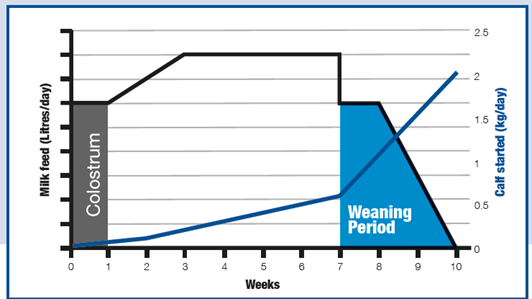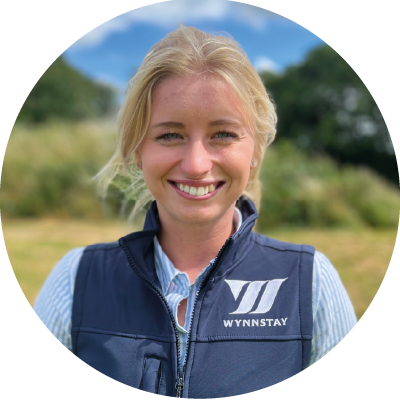Calves should be provided with a clean, highly palatable Calf Starter from day 1. Initially intakes may be low, but they will gradually increase around 14 days of age. Clean, fresh drinking water should also be provided from day 1, regardless of the milk feeding system. With early stimulation of the rumen, a calf’s rumen can begin functioning as early as day 5, with most calves actively ruminating by day 28.
With the nett energy levels being 2x higher in milk solids than in calf starter feed, a calf needs to be consuming approximately 1.5kg - 2kg of starter feed a day for 3 consecutive days prior to weaning.
Although earlier weaning can reduce the cost of rearing calves through reduced milk replacer costs and associated labour, research suggests the reduction in ADG is much more pronounced in calves weaned at or before 6 weeks than calves weaned at 8 weeks (Wolfe et al., 2023). Calves weaned at 6 weeks tend to have lower starter intakes and potentially have a reduction of daily live weight gain by up to 50% during the weaning period (de Passillé and Rushen, 2012).
Abrupt Weaning can lower input costs however the process is stressful and causes calves to lose potential future performance. If the rumen is underdeveloped post weaning, it can significantly impact calf health with increased risk of hindgut acidosis and scour. This subsequently leads to a reduction in performance with lower Average Daily Gains (ADG), reduction in starter intakes, lower feed efficiency and a reduced rumen function.
Gradual weaning encourages the consumption of starter feed which thereby reduces the lag between demand and supply of nutrients at weaning. This can reduce disease incidence, improve feed efficiency and the calf’s ability to express natural behaviours which are intrinsically linked to future lactation performance. With elevated nutrition up to the 8 week period and denoting a timed decrease in the volume of milk offered, it creates a gradual, step-down weaning process. Maximising gain during the first 3 months of life is going to improve milk yield in the 1st lactation and can increase mammary gland tissue by up to 8x.


Week 1 - 3 – Increase feed up to 8L / day.
Week 3 -7 – Feed 8L of calf milk replacer.
Week 8 - Begin weaning period - reduce to 6L and remain for 7 days. Increase starter feed.
Week 9 – 10 - Slowly reduce volume to finish weaning over 14 days. Ensure calves are consuming at least 2kg of starter a day.









